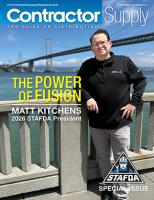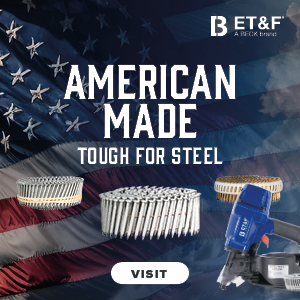 |
Finding Your Why: Creating a Compelling Brand Story
On the surface, differentiating a distribution company from its competitors appears challenging. After all, isn’t everybody selling similar products at similar prices?
Let’s look beyond products, prices and availability. Let’s explore the reasons why a customer would choose you over your competition.
So, what is a “brand” anyway?
“Brand” is one of the most misused words in business. I still remember the first time I heard the word brand. It was in 3rd grade, when our teacher showed us a move about life on a farm. I still remember the images of the strong farmhands holding down the poor little calf as they branded it.
Unfortunately, businesses have appropriated this vision of branding, as if branding is something we can do “to” our customers, the way farmhands brand calf. But, of course, we can’t hold down our customers and imprint our marketing messages on their brains. It’s quite the opposite.
You don’t brand your customers. They brand you.
Unlike the farmhands, you are not the one doing the branding. As customers have interactions with your company, they create their own personal beliefs about you. Yes, you don’t brand your customers. They brand you.
What this means is that your brand is not what you say you are. Your brand is what your customers think you are.
Your #1 branding question
Your first branding question is not, “What should we put on our website homepage?” or “What’s the right color of blue in our logo?” Those questions come later.
Because your brand is what your customers think, your first branding question is this: “What do we want people to believe about us that, if they believed it, they be loyal and committed to working with us?”
Stop for a moment and ponder this important question. Try this thought experiment:
- Imagine one of your loyal customers has just received an email from his boss, telling him that he’s giving your company too much business, and he should “spread the business around” to ensure they are getting the best deals. Your customer is not happy about this email, and he promptly marches into his boss’s office and says, “Boss, sorry, but you’ve got it all wrong. We should be giving (your company) more business, not less. Here’s why …”
What would you want your customer to say after the “Here’s why,” that has a chance of convincing his boss?
If your customer says to their boss, “They always have product in stock, and their prices are fair,” chances are that the boss will not be moved, and they’ll start “spreading the business around.” You can expect the same result if your customer says to this to their boss about your company: “They have been in business for years, and they have integrity.” Yawn.
If you want this hypothetical boss to be persuaded to change their mind, your customer needs to say something that isn’t about your company but about how your company makes the customer’s company better off.
Please go back and read that sentence. It’s critical. Your customer doesn’t really care about who you are, or what you do, unless the customer can see how what you do and who you are makes them better off.
What if, instead of saying those things, your customer said one of these things to his boss about his relationship with your company:
- “They help me win jobs because they collaborate with me to help me meet my customer’s needs.”
- “We never fall behind schedule when we work with them because they never miss a delivery time. It never happens. But when we work on a job with their competitors, we’ll always have a few times where our crews are sitting around waiting for supplies to show up.”
- “When one of our customers has a problem, they bend over backwards to help us fix the issue. They make us look good to our customers.”
The “little why” vs. The “Big Why
Notice the difference in the first set of statements compared to the second group. In the first group of statements, your customer said things that described your company, and his boss was not convinced. I call these kinds of statements the “little why,” because they are just about you.
The second group of statements are what I call the “Big Why.” These are reasons why they should do business with you that go well beyond who you are, and what you do and focus, importantly, on how you make the customer better off.
This is so important because your customer really doesn’t care all that much about you. (Sorry to be the bearer of that news!) Your customer cares about themself and their company. For the customer to value you, and be loyal to you, their beliefs need to focus on how the customer is better off because of you.
Now, of course, the three “Big Why” statements I gave above are just examples. What is your Big Why?
Focus on The Big Why! Make everything about how you improve your customers’ situation.
One Customer at a Time
Another misconception people have about branding is that our brands are our general reputation in the marketplace. This is somewhat true for mass-marketed brands like Disney, Nike and Apple, but it’s not true for you.
Your brand is built one customer at a time. You will get people to believe they are better off because they work with you not because you tell them that, but because you demonstrate that through your work.
What this means is that your website and your social media posts are some of the least effective ways you communicate your brand. It’s what your team members do every day, as they make customers better off, that builds your brand.
When you and your team get to know each customer and understand what that customer’s interests and needs are, you can then meet those needs, so the customer not only is better off but credits you for making them better off. Then you will be effectively differentiating your company from your competition. You’ll avoid falling into the trap of being “just another distributor.” You’ll make sales for reasons beyond price and product availability. And, as is so valuable to a distribution business, you’ll capture valuable market share, as your customers shift business from your competitors to you.
Author and speaker Steve Zastrow will lead the audience through the steps of identifying their company’s true purpose and improving their brand in “Find Your Why: Creating a Compelling Brand Story” on Sunday, Nov. 9 from 8:30-10:30 a.m. and again from 10:30 a.m.-Noon.
Steve Zastrow is the author of three acclaimed books Brand Harmony, We: The Ideal Customer Relationship and Ditch the Pitch. He has taught thousands of people the concepts in these books through his live events, helping apply his ideas to the success of their businesses. Learn more at www.yastrow.com.
















